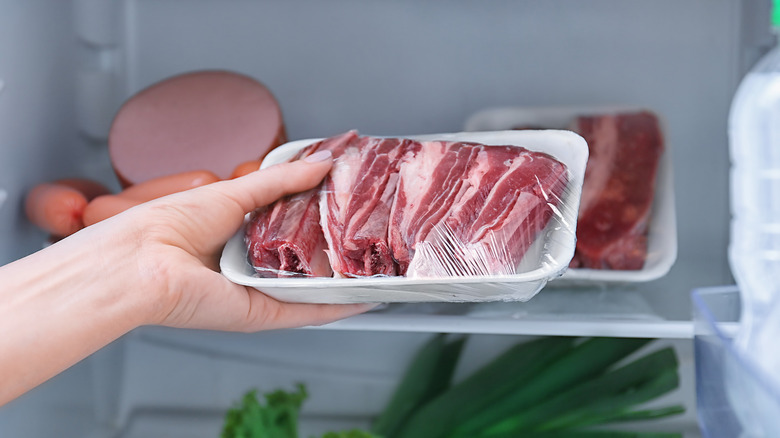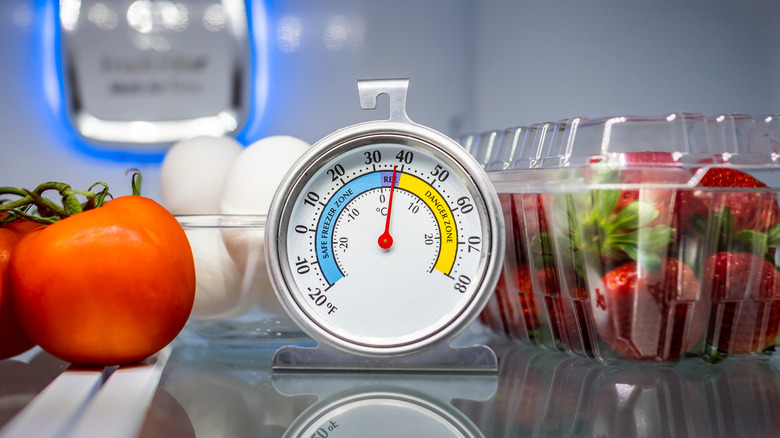Here's How Long You Should Keep A Raw Cut Of Meat In The Fridge
We may receive a commission on purchases made from links.
There is a pretty tight timeframe for freshness when it comes to raw cuts of meat. Essentially, the clock starts ticking the minute you grab it off the shelf and place it in your grocery cart. According to the USDA, uncooked cuts of meat can safely be stored in the fridge for between 3-5 days — meaning you should check it after three days before cooking or freezing it. This includes roasts and steaks, as well as veal, lamb, and pork chops. The window is even shorter with poultry, seafood, and ground proteins, which have a fridge-safe window of 1-2 days.
According to Healthline, eating food past these times poses a greater risk of ingesting both pathogenic bacteria and those that promote spoilage. Pathogenic bacteria is the more insidious of the two as it is responsible for foodborne illnesses. Spoilage bacteria won't necessarily induce illness, but it will affect the meat's taste, appearance, and smell and is also best avoided.
How to store raw cuts of meat properly inn the fridge
Storing raw meats properly in the fridge will not only ensure safety but help prolong their shelf life and preserve taste. You can adopt a few best practices to avoid the growth of both types of bacteria and push the stored meat to the upper limit of the 3-5 day guideline.
Once you get home from the grocery store, repackaging the meat is the first step you can take. Butchers use butcher paper for a reason — it's perfect for tightly wrapping meat, limiting its exposure to the air; if your meat came wrapped up in it, double-check it's secure and leave it be. If your meat comes in a styrofoam package, check that it's wrapped tightly and free of tears, and it's good to go as well. Of course, if you have a vacuum sealer for a true airtight seal, all the better.
Additionally, it's best to store raw meats on the fridge's bottom shelf to avoid any drippings and cross-contamination. The limit this possibility, you can place them in a plastic bag or set them on a plate to catch any leaking juices. And lastly, your fridge needs to be at or below 40 degrees Fahrenheit to avoid the danger zone and slow bacterial growth, so it's good practice to do regular temperature checks or invest in an external thermometer for your fridge.

